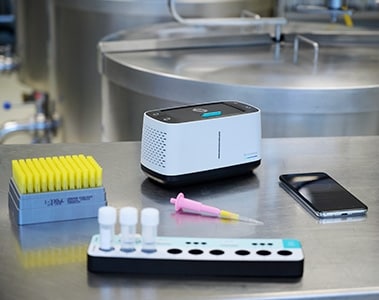
Fermented food for thought: enjoy it all
09 Aug 2022
I’ve made it my business to pay attention to lactose-free products in the marketplace. But these days I’m far from being the only one! Many of my friends and family members are now actively looking for lactose-free options, not only in the supermarket but also when ordering a cappuccino in a restaurant or coffee bar.
Walk into many supermarkets, cafés, and restaurants today and chances are, you can find a lactose-free option on offer. Just a couple of weeks ago, the popular Costa Coffee chain in the UK announced that they would start offering lactose-free milk in their more than 2,000 locations across the country. Customers are delighted that they can now get their latté without the lactose, giving people who live a lactose-free lifestyle greater freedom in how — and where — they get their coffee fix.
Costa Coffee and many other companies recognize the growing demand for this kind of choice and convenience. The market growth for lactose-free dairy has been remarkable in recent years, significantly outpacing overall dairy (7.3% vs. 2.3% in the period 2017-2022).
As you might expect, milk is the largest category, representing two-thirds of the market, and is the main driver behind the absolute growth of lactose-free dairy. Behind milk is lactose-free yogurt, anticipated to reach €1.1 billion by 2022 with new launches in all types of yogurt, and in all types of flavors and textures. Last week I tried a lactose-free Apple-Cardamom yogurt – it was delicious!
However, when it comes to the fastest growing segment, we have to look beyond both milk and yogurt. Lactose-free cheese is expected to grow at an impressive 8.4% between 2017 and 2022. People who are following a lactose-free diet crave convenience and variety, and don’t want to settle for less. Have you ever thought about lactose-free kefir, soft cheese, ice cream or gorgonzola?
Western Europe is the biggest and fastest growing market for lactose-free dairy, followed by Latin America. Paradoxically, the two individual countries with the largest markets for lactose-free come from outside these regions: USA and China. This is clearly apparent when I talk to DSM colleagues in our regional offices who are seeing the growing presence of lactose-free products in these markets. For example, in a coffee bar in New York I noticed that it is the most normal thing in the world to ask for a non-lactose, low-fat Frappuccino. Actually it seems unthinkable that this would not be available in these big cities where there is a greater focus on a healthy lifestyle. Trends like lactose-free are a clear part of this trend.
Also performing extremely strongly are Italy, Spain and Mexico thanks to the optimal combination of high growth rates and a high number of product launches. If solely the number of product launches is considered – a useful marker of innovation – then Finland, Germany and Brazil stand out. These are all very innovative countries launching surprising products such as a peppermint ice-cream bar or a raspberry & hibiscus Natural Probiotics Daily Shot. Also worthy of mention are Colombia and France, both of which have a sizeable lactose-free market. However, these are more mature markets and they lag behind the leading countries when it comes to new product launches, which are of course essential to develop this category even further.
What is happening in your specific situation or region? I would be interested to hear your insights. Feel free to drop me an email here .
The lactose-free trend continues to grow. Consumers who are eating a lactose-free diet crave convenience and variety the most.
According to Euromonitor, by 2022, lactose-free dairy is expected to reach the significant market size of €9 billion.
Enabling lactose-free and sugar-reduced dairy that tastes great with Maxilact® and Maxilact® Smart.
Our experts are always ready to help you
07 July 2019

09 Aug 2022


09 Jun 2022
